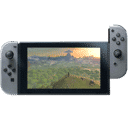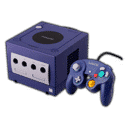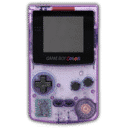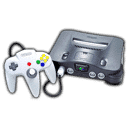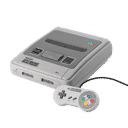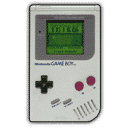
Summary:
The U.S. Patent and Trademark Office has ordered a reexamination of Nintendo’s patent covering a mechanic for “summoning and battling characters,” a claim widely associated with the company’s broader posture toward monster-taming games and, by extension, its legal dispute with Palworld developer Pocketpair. The move, initiated by USPTO Director John A. Squires, cites substantial new questions of patentability raised by earlier filings—identified publicly as Yabe (Konami, 2002) and Taura (Nintendo, 2019). That prior art could narrow or undermine the newer claim, depending on how examiners interpret overlap, obviousness, and the patent’s asserted scope. While a reexamination isn’t a revocation, it is a serious inflection point: Nintendo now has a short runway to defend, amend, or potentially see the patent’s claims curtailed. The development also lands alongside a separate setback in Japan, where a related application was recently rejected for lack of inventive step. Put together, these events complicate any strategy that relies on broad enforcement against games using summoning mechanics. We walk through what a director-ordered reexamination signals, what timelines and outcomes to expect, how “public outrage” factored into the discourse, and what this means for developers building monster-taming systems right now.
What exactly changed: a rare, director-ordered reexamination at the USPTO
The biggest shift isn’t just that Nintendo’s patent is being reviewed again—it’s who triggered the review and why. USPTO Director John A. Squires directed a reexamination after determining that substantial new questions of patentability exist in light of earlier patents credited publicly as Yabe and Taura. In plain terms, prior art may overlap with Nintendo’s claims enough to call their validity into question. That is unusual; directors don’t often step in personally. When they do, it signals the stakes are high, the legal posture is sensitive, or both. For Nintendo, this raises the bar for defending what many viewed as a broad claim on summoning mechanics, because any amendment or defense now happens under a spotlight. For everyone else, especially teams working on monster-taming or companion-battle systems, the decision suggests more breathing room may be on the horizon—even if nothing is guaranteed today.
Why the “substantial new questions” bar matters more than it sounds
Reexamination isn’t automatic; it requires a credible reason. “Substantial new questions” means the USPTO sees enough in the earlier patents to warrant a second look. That doesn’t predetermine the outcome, but it puts Nintendo on defense. Examiners can confirm the claims, reject them, or allow them only after narrowing amendments. Narrowing is often the quiet middle path: the patent survives, but its scope tightens, limiting how widely it can be enforced. If you’re Nintendo, the risk is a loss of leverage in ongoing or future disputes; if you’re a developer, narrow claims lower the chance that a generic companion-summoning feature suddenly puts your design in legal crosshairs. That gap—between confirmed breadth and narrowed survival—is the space to watch over the next months.
What’s in the prior art: Yabe (2002) and Taura (2019)
The cited prior art serves two functions: it maps known terrain and shows what would have been obvious to skilled practitioners when Nintendo filed its claim. Yabe (attributed publicly to Konami, 2002) points to systems with sub-characters participating in combat, either automatically or with player intervention. Taura (Nintendo, 2019) underscores how similar concepts already appeared within Nintendo’s own filings. Together, they suggest that summoning and battle management weren’t novel at the time of Nintendo’s newer claim. The question becomes not “did summoning exist?” but “what, exactly, does this Nintendo patent add that wasn’t already taught or suggested?” If the delta is small—or the claim language reads like a sweeping umbrella—expect examiners to press for amendments or knock back parts of the claim set.
How this intersects with Nintendo vs. Pocketpair over Palworld
Legal strategies are mosaics, not single tiles, but patents are often the boldest pieces on the board. If your enforcement plan leans on a broad patent about summoning mechanics, any reexamination introduces uncertainty. Even if Nintendo never intended to wield this claim directly against Palworld in a U.S. venue, the optics and leverage of a headline-ready patent still matter. A narrowed or invalidated claim limits that rhetorical and legal force. On the flip side, if some claims survive with clear, specific contours, Nintendo could still lean on them in targeted ways. The practical effect for Palworld’s creators and other studios is clarity: the more specific the surviving claims, the easier it becomes to design around them without fear of a knock on the door.
Optics, outrage, and why public reaction showed up in the narrative
Public reaction doesn’t decide validity, but it shapes the conversation around it. This patent drew fire for appearing to cover widely used summoning mechanics across genres. That pushback framed the patent as potentially chilling for developers who rely on companions, minions, or monster allies—features that span everything from RPGs to strategy games. The reporting highlighted that the director’s step was rare, which further amplified the story. While examiners won’t weigh social media comments when reading claims, the fact that the review was framed as exceptional ensures that clarity—through confirmation, narrowing, or rejection—arrives with unusual visibility. In a space where chilling effects can be felt even without legal action, visibility can be its own corrective.
Design risk today vs. design risk after the reexamination
Right now, the safest path for teams is to document their inspirations and technical implementations, and to track how companion systems differ from any asserted claims. If the reexamination narrows the patent, design risk should fall, and studios can relax guardrails accordingly. If claims are confirmed as-is, expect renewed caution around specific mechanics, including how companions are invoked, controlled, and interoperate with player actions or modes. If the USPTO rejects the core claims, the chilling effect lifts dramatically—though it doesn’t grant anyone a blank check, because other patents (from Nintendo or elsewhere) can still apply to specific techniques or frameworks. The reexamination’s outcome will directly influence how much daylight developers perceive around these systems.
The Japan connection: a parallel setback and why it matters
In Japan, a related Nintendo application recently hit a roadblock when the Japan Patent Office rejected it for lack of inventive step, citing extensive prior art across modern games. While the U.S. and Japan operate under different legal standards and procedures, the narrative throughline is similar: examiners see substantial overlap between Nintendo’s claims and what was already known. For a company trying to build a cohesive global enforcement posture, setbacks in one jurisdiction are more than local news—they can shape filings, expectations, and negotiations elsewhere. If you’re modeling risk, the combination of a JPO rejection and a USPTO director-ordered reexamination is a heavy signal that broad, umbrella-style claims will face skepticism.
Timelines: what happens next and how long it could take
Director-ordered reexaminations move through the standard steps: the office identifies the issues, the patent owner can respond (often within a short window), and examiners issue office actions that accept, reject, or require amendments to claims. Each exchange can add weeks or months. A two-month response window for Nintendo is short in patent terms, but subsequent steps can stretch. Practically, that means industry uncertainty lingers for a spell. Teams planning releases should assume the patent could be narrowed or shaken up, and keep alternate designs or documentation in their back pocket. Legal departments will track each action, because a single narrowed term—say, on how summoning modes are defined—can flip a project’s risk profile overnight.
How prior art undercuts broad summoning claims
Prior art works like a map of known paths. If a new patent claims a highway that’s already drawn, it won’t stand; if it claims a frontage road running alongside, it might survive, but in a thinner form. Yabe and Taura, paired with broader history around companion systems, draw a dense map. From classic 2000s action titles to modern open-world sandboxes, designers have implemented allies, sub-characters, and AI helpers in numerous control modes. To maintain validity, Nintendo’s claim must point to something materially different: a linkage, sequencing, or technical arrangement that wasn’t obvious at filing time. Without that, examiners typically ask for narrower language or shut down the overlap. This isn’t punitive; it’s how the system ensures patents reward real advances rather than common patterns.
The likely playbook: amendments, arguments, or both
Expect Nintendo to argue that its claim language captures a distinct architecture or control schema rather than a generic “summon and fight” idea. That could mean spotlighting how modes switch, how the system resolves player vs. companion control, or how UI and state machines cohere in a unique way. If those arguments stick, the patent can survive in more surgical form. If they don’t, amendments can rewrite the claims to focus on narrow embodiments that reduce overlap with prior art. The trade-off is leverage: narrow claims are harder to use against a broad field, but they’re more defensible and less likely to provoke backlash or further challenges.
What this means for studios shipping in the next 6–12 months
If you’re locking features for a launch in the coming year, the pragmatic approach is to push on clarity and documentation. Show how your companion logic differs from any asserted architecture; keep clean records of design rationale; and consider optional toggles that avoid particular control patterns if they become risky later. None of this guarantees immunity, but it does lower risk and improves your footing if questions arise. If the reexamination narrows the claim set, a lot of teams will find they were already outside the fence. If it doesn’t, having those documents handy gives legal teams a better shot at arguing non-infringement based on how your system actually works.
Public reaction and the chilling effect on game design
When designers feel watched, they trim ideas that might never have been a problem. That’s the chilling effect in practice, and it’s why news of a director-ordered reexamination matters beyond courtrooms. Developers have long borrowed from shared vocabularies of play—summons, pets, minions, spirits, drones—each remixing familiar beats. Overbroad patents can bottle that vocabulary, or at least make teams think twice. A visible, process-driven reexamination helps reset expectations toward specificity: protect true technical leaps, not archetypes of play. The best outcome for players is variety; the best outcome for patent law is clarity; and the best outcome for studios is knowing where the lines actually sit. A clean record from the USPTO can serve all three.
Comparing the U.S. reexamination with Japan’s rejection
Both events hinge on prior art, but the levers differ. Japan’s “inventive step” analysis drilled into whether the claimed invention was obvious in light of known work. The U.S. reexamination starts with “substantial new questions” and then works through anticipation and obviousness standards. The outcomes could diverge on paper even if the industry takeaway aligns. Still, the coordinated signal is clear: claims that read like genre-level features face stiff headwinds unless they anchor to specific, non-obvious mechanisms. For multiregion publishers, the lesson is strategic: file claims that reflect real technical novelty across jurisdictions, not just high-level design ideas that any seasoned player would recognize.
If Nintendo defends successfully, what changes?
Success here doesn’t mean the end of summoning in games; it means a narrower, cleaner boundary around what Nintendo specifically engineered. That could focus on state transitions between control modes, data structures that coordinate companion AI with player inputs, or deterministic sync methods during multi-mode combat. If those details survive, they’ll frame where infringement is even plausible. In practice, that nudges studios to adjust implementations rather than abandon companion features. For Nintendo, it preserves a right to exclude where it truly innovated, without provoking the backlash that broad, abstract claims triggered at first glance.
If the claims are rejected, what changes?
A rejection would pull one of the more visible teeth from any enforcement plan aimed at monster-taming games in the U.S. It wouldn’t end all litigation risk—copyright, trademarks, and other patents would still stand where relevant—but it would deflate the idea that summoning mechanics sit under a single, broadly enforceable umbrella. The immediate effect would be psychological: indie and mid-tier teams would feel freer to ship. The longer-term effect would be design-positive: more experiments, more riffs on companions, and more willingness to revisit old sub-genres once considered too risky to touch.
Either way, expect tighter claim drafting across the industry
Publishers watch each other. If a high-profile claim is challenged with prior art across decades of games, counsel will push for sharper, more technical drafting going forward. That means fewer “big idea” filings and more claims rooted in concrete implementation details—data flows, state resolution, AI cooperation protocols, input arbitration. For players, that’s invisible; for developers, it’s healthy. The law rewards genuine technical lift. The market rewards fresh play. Narrow patents can coexist with creative freedom more easily than broad ones that read like design bibles.
Where this leaves Nintendo’s broader legal strategy
Reexaminations don’t happen in isolation. Nintendo still has other filings and causes of action, and the company can be very effective when it litigates narrowly around specific assets. The difference now is that a flagship patent—one that drew intense attention because of perceived breadth—sits under a microscope. Regardless of outcome, Nintendo will likely recalibrate messaging and enforcement to avoid the impression that it’s claiming ownership over core genre patterns. In business terms, the company can still defend its IP vigorously while choosing its battles with more precision, focusing on unmistakable overlaps in code, art, or exact mechanics rather than archetypal features.
Practical takeaways for developers building monster-taming systems
Document your technical novelty. Track how your summon logic, AI orchestration, and mode transitions differ from well-known patterns. Avoid copy-paste implementations of the exact architectures described in prominent filings. Provide options for manual vs. automatic control that aren’t bound to any single, contested pattern. Most of all, keep your production logs detailed—design docs, flow diagrams, timestamps. If questions ever arise, clear contemporaneous records make a world of difference. The reexamination doesn’t grant immunity, but it improves the climate for thoughtful, original design built on shared genre foundations.
Bottom line: clarity helps everyone—from platform holders to players
Summoning companions to fight is as old as modern gaming, and it’s beloved for a reason. When the rules around protecting true innovations are clear, we all benefit. Platform holders safeguard real breakthroughs. Studios design without second-guessing familiar grammar. Players get more games that take risks with companions, without lawyers shaping the fun. The director-ordered reexamination is a chance to reset the line between innovation and ownership. However it lands—confirmation with sharp edges, narrowed claims, or rejection—the process points toward a healthier balance between protecting work and letting a genre breathe.
Conclusion
The USPTO’s director-ordered reexamination of Nintendo’s summoning-and-battling patent marks a pivotal moment in a much-watched dispute. Prior art from Yabe and Taura didn’t come out of nowhere; it reflects a long, public history of companion systems that developers have explored for decades. That history now presses on the patent’s scope, forcing a decision: preserve narrowly defined novelty or step back from umbrella-style claims. For Nintendo, it’s a test of how precisely the company framed its innovation. For developers, it’s a signal to keep building—documented, differentiated, and confident that shared genre grammar remains a commons when claims drift too broad.
FAQs
- Q: Does reexamination mean Nintendo’s patent is revoked?
- A: No. Reexamination reopens review based on new questions of patentability. Examiners can confirm, narrow, or reject claims. Nintendo can respond, argue, and amend; the outcome isn’t predetermined.
- Q: Why is a director-ordered review a big deal?
- A: It’s rare for the USPTO director to personally initiate a reexamination. The move signals heightened importance and scrutiny, and it accelerates attention on prior art that may undercut the patent’s breadth.
- Q: What prior art is in play here?
- A: Public reporting points to Yabe (Konami, 2002) and Taura (Nintendo, 2019). These filings describe sub-character and companion combat behaviors that may overlap with Nintendo’s newer claim, raising obviousness concerns.
- Q: How does this affect the Palworld dispute?
- A: It complicates any strategy that leans on broad summoning claims. If the patent is narrowed or rejected, Nintendo’s leverage shrinks; if confirmed as-is, caution around specific implementations will increase.
- Q: What should developers do while this plays out?
- A: Keep thorough design documentation, highlight technical differences from known systems, and avoid mirroring any single contested architecture. Good records and distinct implementations reduce risk regardless of the outcome.
Sources
- US patent office director orders re-examination of Nintendo’s patent on summoning characters to make them battle, Video Games Chronicle, November 5, 2025
- US Patent Office Orders Reexamination Of Nintendo’s ‘Summoning Characters’ Patent, NintendoSoup, November 5, 2025
- ‘Firm Faces Another Setback in Battle Against Palworld’, Nintendo Life, November 5, 2025
- Nintendo’s patent on summoning fighting NPCs is being reexamined, Engadget, November 4, 2025
- Japan Patent Office rejects Nintendo application relevant to Palworld dispute, Games Fray, October 29, 2025
- Japan’s patent office rejects Nintendo claim for lack of originality, Windows Central, October 30, 2025
- John A. Squires – USPTO Director profile, United States Patent and Trademark Office, September 22, 2025
- US patent office director takes authority over agency patent reviews, Reuters, October 17, 2025


